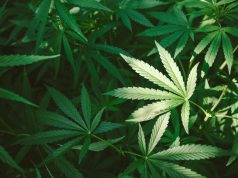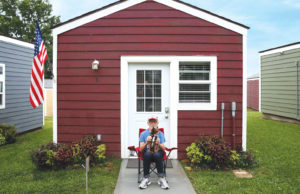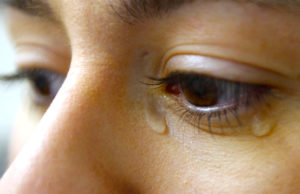
The color of light plants grow under makes an enormous difference in their physical properties, which is critical knowledge when you’re growing a specific plant for a specific purpose. If you want rhubarb or celery, you’ll want to grow your plants tall and stemmy — however, if you’re growing cannabis, you’ll want exactly the opposite.
“It’s not good enough when you’re doing indoor agriculture just to get the plants to grow,” says Kevin Frender, chief science officer for Black Dog LED. “You need to maximize whatever quality it is that you’re trying to get from those plants, whether it’s flowers or fruit. And you want to try and keep the plants as small and compact as possible so you can fit more of them in your expensive-to-set-up indoor grow.”
That means setting up lights that can be dialed in to target exactly the spectrum of light those indoor plants need, to grow exactly how you want them to.
“Modern LEDs are far surpassing the traditional [lighting] technologies in terms of efficiency,” Frender says. “With spectral control, we can really tune the plant’s growth in to be exactly what we want it to be and make them produce more flowers as opposed to more stems or bigger leaves.”
Frender grew up in Boulder, learning how to plant seeds at the age of 3 from his grandfather, and has been gardening ever since. Today he helps develop Black Dog’s innovative full-spectrum LED grow lights.
He’s something of a mad-botanist. He grows more than 400 different species of exotic fruit trees, carnivorous plants and flowers from around the world — all from the comfort of his Longmont home — all with Black Dog LEDs.
He explains that plants have two main types of chlorophyll pigments that absorb light: chlorophyll A (which absorbs a lot of red and some blue spectrums of light) and chlorophyll B (which absorbs a lot of blue and some red spectrums). With full-spectrum LEDs, cultivators like Frender can dial down the yellow and green spectrums of light, which cause plants to produce big leaves and long stems; and instead, amp up the blue and red spectral output. That produces the biggest cannabis flowers and the smallest leaves and stems, maximizing the efficiency of any commercial or independent grow operation, Frender claims.
“There’s a lot of different lights that can grow plants, but there’s a very particular spectrum that can get plants to do exactly what we want them to do,” he says. “[Full-spectrum LEDs] offer enough control over how the plants grow that we can actually get the plants to stay shorter and actually (produce) bigger (flowers) than they would under natural sunlight.”
Full-spectrum LED bulbs also last longer, he says, reducing the cost of frequent replacement. They’re also more energy efficient than traditional high-pressure sodium (HPS) bulbs, reducing power-usage costs; and, perhaps most importantly, they don’t run as hot as HPS bulbs do, Frender says.
“That really helps if you’re trying to stack them for vertical growth,” he says.
Because HPS bulbs run so hot, they require a lot of space between them and the plants. If they’re too close, the bulbs will burn the crop. And, Frender points out, the plants will also naturally grow taller under traditional HPS bulbs, further reducing the available grow space in a room.
Full-spectrum LEDs by comparison put out significantly less heat. And because the plants will be shorter under the spectrums put out by LEDs, vertical cannabis farming becomes a viable option, according to Frender, potentially doubling or even tripling the production capability of any given grow space.
For the individual growing their own cannabis, full-spectrum LEDs could offer a much more efficient and effective means of growing at home than HPS bulbs. And for commercial growers too, these LEDs are becoming a more financially attractive and incentivized option. On top of all the saved energy costs LEDs offer, the Colorado Energy Office’s recently launched Colorado Cultivators Energy Management Pilot Program is also working with public utility companies to help get energy rebates for commercial cannabis cultivators (and beer makers) that make the switch from HPS bulbs to LEDs.
As for Frender, he’s tried all the alternatives, but he says they simply can’t compete with LEDs.
“For decades a light bulb was a light bulb was a light bulb. You could get a ‘warm’ light or you could get a ‘cold’ light, but that was pretty much your only choice between different light bulbs,” he says. “Now we can combine different colors of LEDs and different ratios to get any particular spectrum of light we want, and that gives us the complete control that we’ve always been lacking in the past over how plants grow.”














